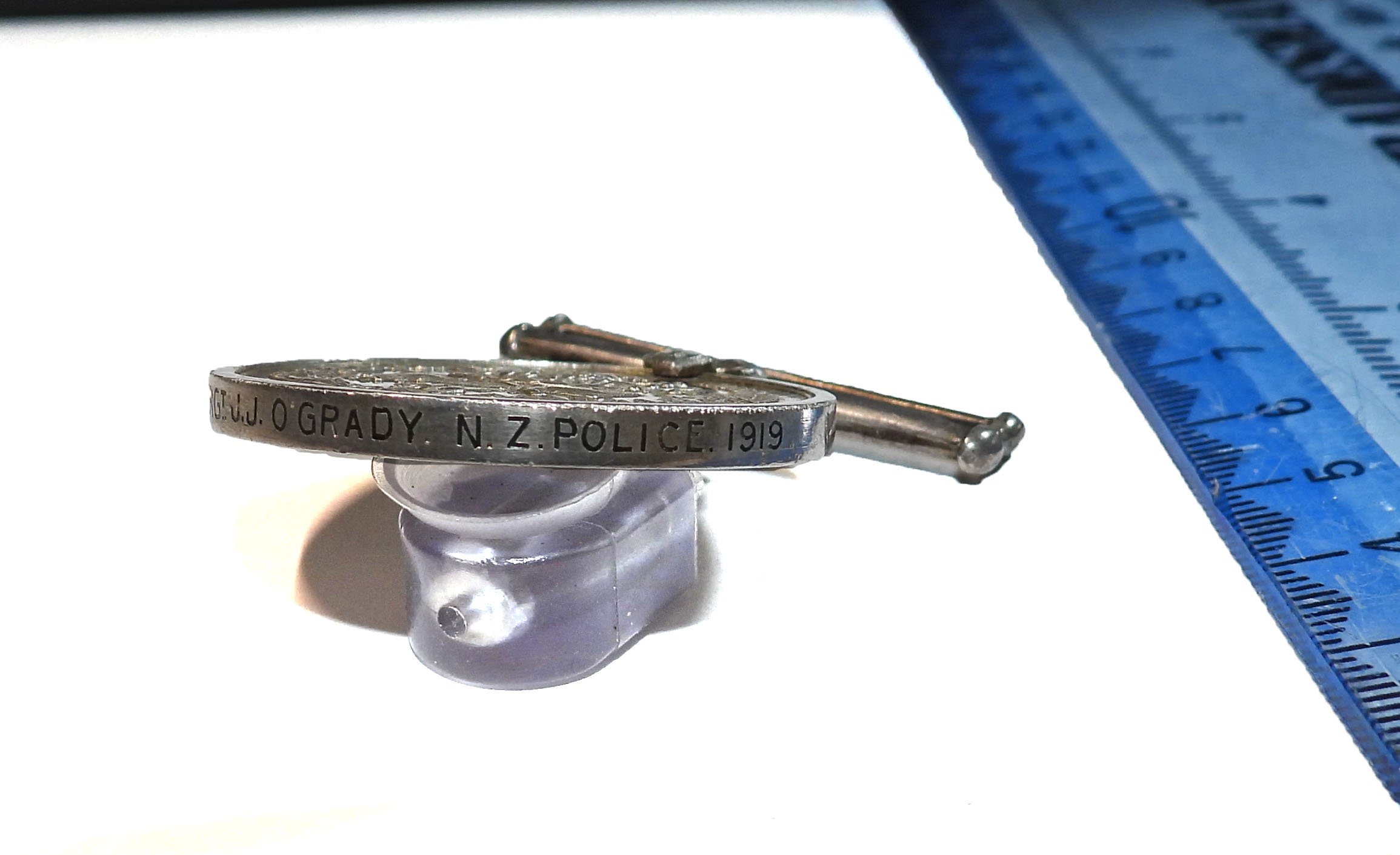The King's Badge. Boxed. World War Two.
A silver-plated King's Badge for Loyal Service in original box of issue. World War Two (WW2).
Issued by the Ministry of Pensions.
Issued from 1941.
Presented by: United Kingdom, Australia and New Zealand.
Good condition with box of issue and buttonhole fitting for men. Ref: DDD76.
A silver-plated King's Badge for Loyal Service in original box of issue. World War Two (WW2).
Issued by the Ministry of Pensions.
Issued from 1941.
Presented by: United Kingdom, Australia and New Zealand.
Good condition with box of issue and buttonhole fitting for men. Ref: DDD76.
A silver-plated King's Badge for Loyal Service in original box of issue. World War Two (WW2).
Issued by the Ministry of Pensions.
Issued from 1941.
Presented by: United Kingdom, Australia and New Zealand.
Good condition with box of issue and buttonhole fitting for men. Ref: DDD76.
The King's Badge was authorised by the United Kingdom Ministry of Pensions and officially issued from November 1941 (Second World War).
Initially issued to servicemen who, as a result of their injuries, had been discharged from active service. It was to be worn only on civilian clothing.
Its basic purpose was to show that the wearer was a veteran.
As well as members of the armed services, merchant navy and fishing fleets qualifying, by late 1944, it was also awarded to the coastguards, police, members of the Civil Defence Services, and the Home Guard.
Presented by: United Kingdom, Australia and New Zealand.
The King's Badge included the initials GRI for Georgius Rex Imperator, in this case referring to King George VI. The wording around the initials: For Loyal Service.
The King's Badge was not serially numbered.
Three versions of the badge were produced - two larger versions (approximately 26mm in diameter) with either a half-moon buttonhole fitting for men, or a pin and latch fitting for women: a smaller buttonhole version (approximately 19mm in diameter) was also manufactured (a variation of this has the outside of the badge enameled in blue).
All versions were made in die-stamped metal but without any maker’s marks.


































